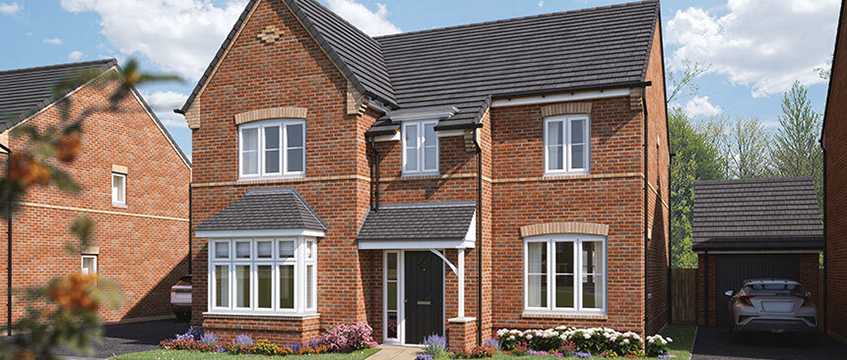Option to purchase land – Development lease – Valuation – Lease of land for development of golf course – Lease containing option for appellant tenant to purchase – Appellant seeking to exercise option – Contradictory valuation provisions in lease – Whether land to be valued with existing golf course use or at full market value including potential for residential development – Appeal dismissed
The appellant developed and operated a pay-and-play golf course on land in Cumbernauld, Scotland, pursuant to a lease granted to it by the respondent local authority for a term of 50 years from June 1999. The lease contained an option to purchase the land; a valuation clause defined the option price as “the full market value of the subjects hereby let as at the date of the proposed purchase… of agricultural land or open space suitable for development as a golf course… In determining the full market value… the landlords shall assume… that the subjects hereby let are in good and substantial order and repair and that all obligations of the landlords and the tenants under this lease have been complied with, and… the landlords shall disregard… any improvements carried out by the tenants during the period of this lease otherwise than in pursuance of an obligation to the landlords…”.
The appellant served notice to exercise the option in 2007. The respondents fixed the option price at £5.3m, taking into account hope value attributable to the potential for future residential development resulting from the inclusion of the land in an area identified for potential housing in a structure plan of 2006 and a finalised draft local plan of 2008. The respondents served formal notice on the appellant requiring it to complete for that sum within 28 days, failing which they would rescind the option contract. The appellant did not comply with that notice and the respondents served a formal notice of rescission.
The appellant sought and obtained a declaration that the option to purchase had not been validly rescinded and that the land had to be valued without reference to any increase in value attributable to the potential for residential development. An appeal by the respondents was allowed. It was held that: (i) the land had to be valued as though it was still agricultural land or open space suitable for development as a golf course; but (ii) the “full market value” of such land could include any potential for residential use: see [2009 CSIH 96; [2010] PLSCS 8. The appellant appealed.
Held: The appeal was dismissed.
The lease was to be construed as a commercial agreement. The objective commercial background was that the respondents were a local authority under a statutory duty not to dispose of land for a consideration less than the best that could reasonably be obtained, while the appellant was a commercial organisation, which, on a successful exercise of the option transferring to it all the rights of ownership, could turn that to its financial advantage if the opportunity arose. Were the appellant to acquire at a price that ignored the potential for residential development, it would benefit from a substantial windfall at the expense of the respondents. The appellant’s preferred interpretation of the valuation clause, allowing it to purchase the land for a sum that took no account of its substantial hope value, produced a result that the parties to a commercial agreement were unlikely to have intended, especially where the relevant clause provided for a valuation at “full market value”.
Per Lord Rodger, Lady Hale and Sir John Dyson SCJ: (1) Something had clearly gone wrong with the drafting of the clause, such that no construction would produce perfect harmony among all its elements. In such circumstances, it was helpful to begin with the assumptions and disregards that the respondents were to apply when determining the full market value. Since they were required to assume that the demised premises were in good and substantial order and repair, and that all lease obligations had been complied with, the respondents, in making their valuation, had to proceed on the basis that the golf course that the appellant was obliged to construct had been constructed and was in good order and repair. Contrary to the approach below, the land was not to be valued as open land on which a golf course was yet to be constructed since that was inconsistent with the assumption set out in the valuation clause. The words “agricultural land or land suitable for development as a golf course” could not be construed in a manner that was inconsistent with the clear directions as to the assumptions that the respondents had to adopt in assessing the market value.
(2) Although the valuation clause directed the respondents to ignore any other improvements that the appellant had not been obliged to carry out, the instructions in that clause did not direct them to ignore other factors that might be relevant to the value of the golf course; the changes made by the structure plan and local plan were such relevant factors. Those changes meant that the potential purchasers of the golf course would include developers that were interested in acquiring the land as a site for possible housing development; the potential open market value of the golf course would have increased accordingly. Construing the valuation clause as a whole and as part of a commercial agreement, the words “of agricultural land or open space suitable for development as a golf course” were not to be interpreted as requiring the respondents to value the land on the basis that it was to be used only as a golf course. Had such an unusual and artificial approach been intended, one would have expected it to be included among the assumptions set out at the end of the clause. Consequently, the respondents were entitled to have regard to the hope value of the golf course when assessing its full market value.
Per Lord Hope and Lord Clarke: In the context in which they appeared, the words “of agricultural land or open space suitable for development as a golf course” described the assumed state of the demised premises at the date of entry and was not a direction on the purpose for which they were being purchased. The insertion of such a description did not prevent account from being taken, on the exercise of the option, of the way in which land in that state might be expected to be used in the future, including for development purposes. The assumptions and disregards in the valuation clause could not be reconciled with the earlier parts of the clause since they were designed to settle the price for premises in their existing use, while the earlier parts were designed to settle the price for premises that would have a value in the open market, which would take account of their development potential. The solution was to be found by recognising the poor quality of the drafting and trying to give a sensible meaning to the clause as a whole, taking into account the factual background known to the parties at the time the lease was entered into. The assumptions and disregards at the end of the valuation clause did not carry sufficient weight to overcome the message conveyed by the opening words of the clause, which indicated that the option price was to be determined by the full market value of the land as described, taking full account of its potential, if any, for development. That was what reasonable commercial parties would have agreed when the lease was entered into, had they applied their minds to the benefits that would accrue to the appellant on an exercise of the option to purchase.
Stuart Gale QC and William Frain-Bell (instructed by Anderson Fyfe LLP, of Edinburgh) appeared for the appellant; James Mure QC and James Findlay (instructed by Dundas & Wilson CS LLP) appeared for the respondents.
Sally Dobson, barrister









